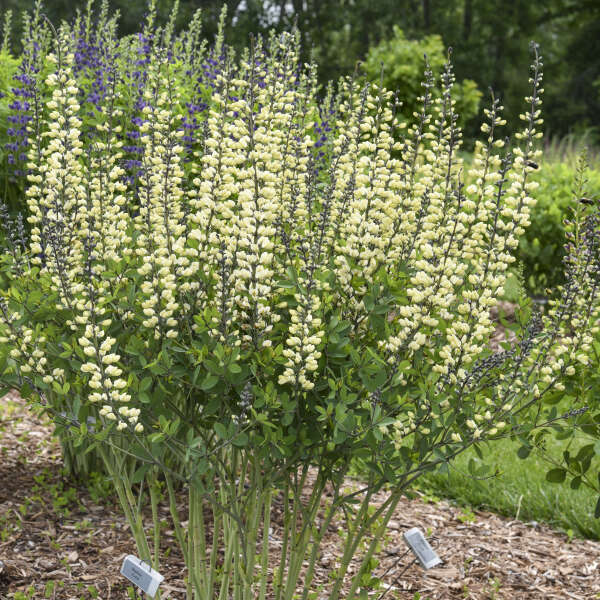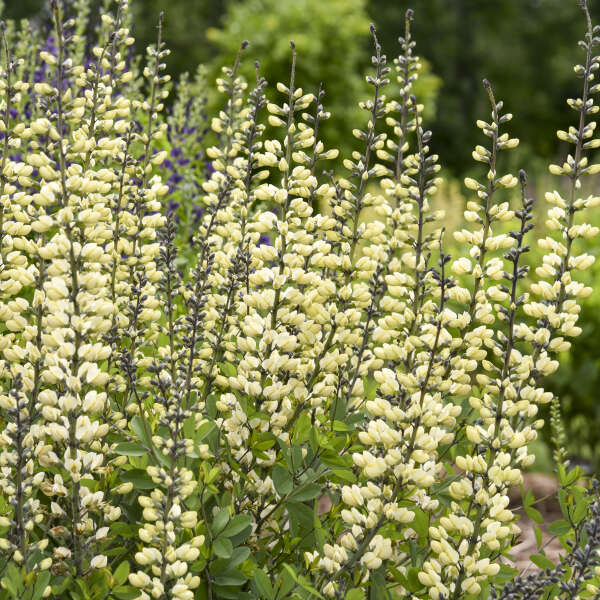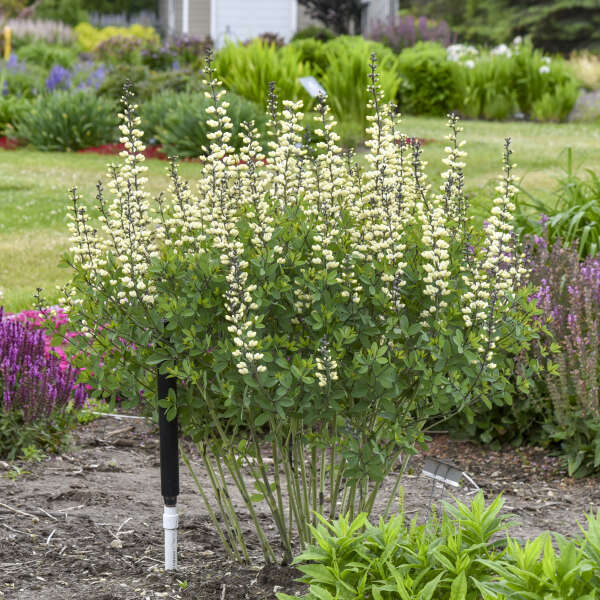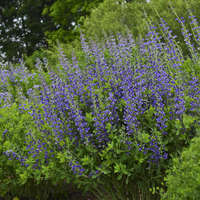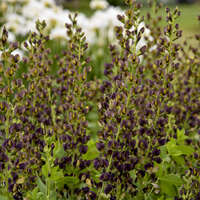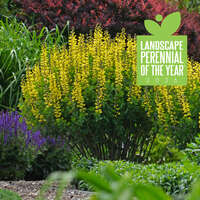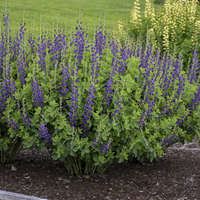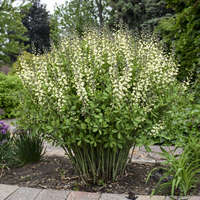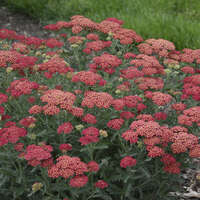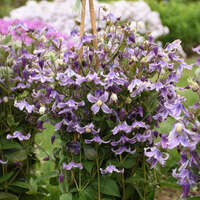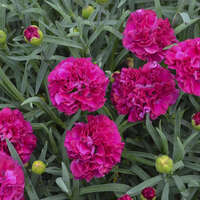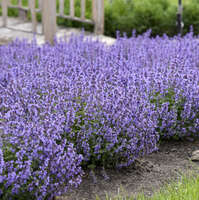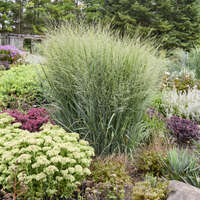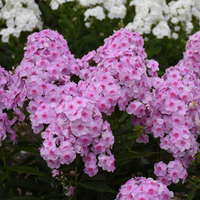Baptisia 'Vanilla Cream II' PP36762 CPBRAF
DECADENCE® Series



Common Name: False Indigo
An improvement on the long standing 'Vanilla Cream', this new selection maintains the same compact, well-rounded shape while blooming earlier with longer inflorescence. Dark charcoal stems hold dramatic 16-18" panicles of creamy white flowers, with branching to add a second and third flush of flowers. Seed pods begin to develop immediately after the plant is finished flowering, deepening in color and persisting into fall. This easy care, drought tolerant, deer resistant perennial is an excellent choice for gardeners looking for low maintenance or native perennials.
Baptisia is easy to grow and will thrive with little maintenance. There are many potential applications in the landscape including meadow plantings, as a backdrop in borders, or as a specimen. Plants are very long-lived once established.
The roots of the DECADENCE® series run deep. What started as a fun botanizing trip in the lower Midwest with a fellow horticultarist blossomed into a complex hybridizing project for breeder Hans Hansen. Hans has made countless crosses with the many native Baptisia species he has collected across Texas and Oklahoma. These crosses have resulted in an array of seedlings with unique flower colors and plant habits. Only the very best have made it into the new DECADENCE® Series, which includes varieties selected for their desirable flower colors and shorter, more compact habit.
The DECADENCE® trademark is owned by Walters Gardens, Inc.
